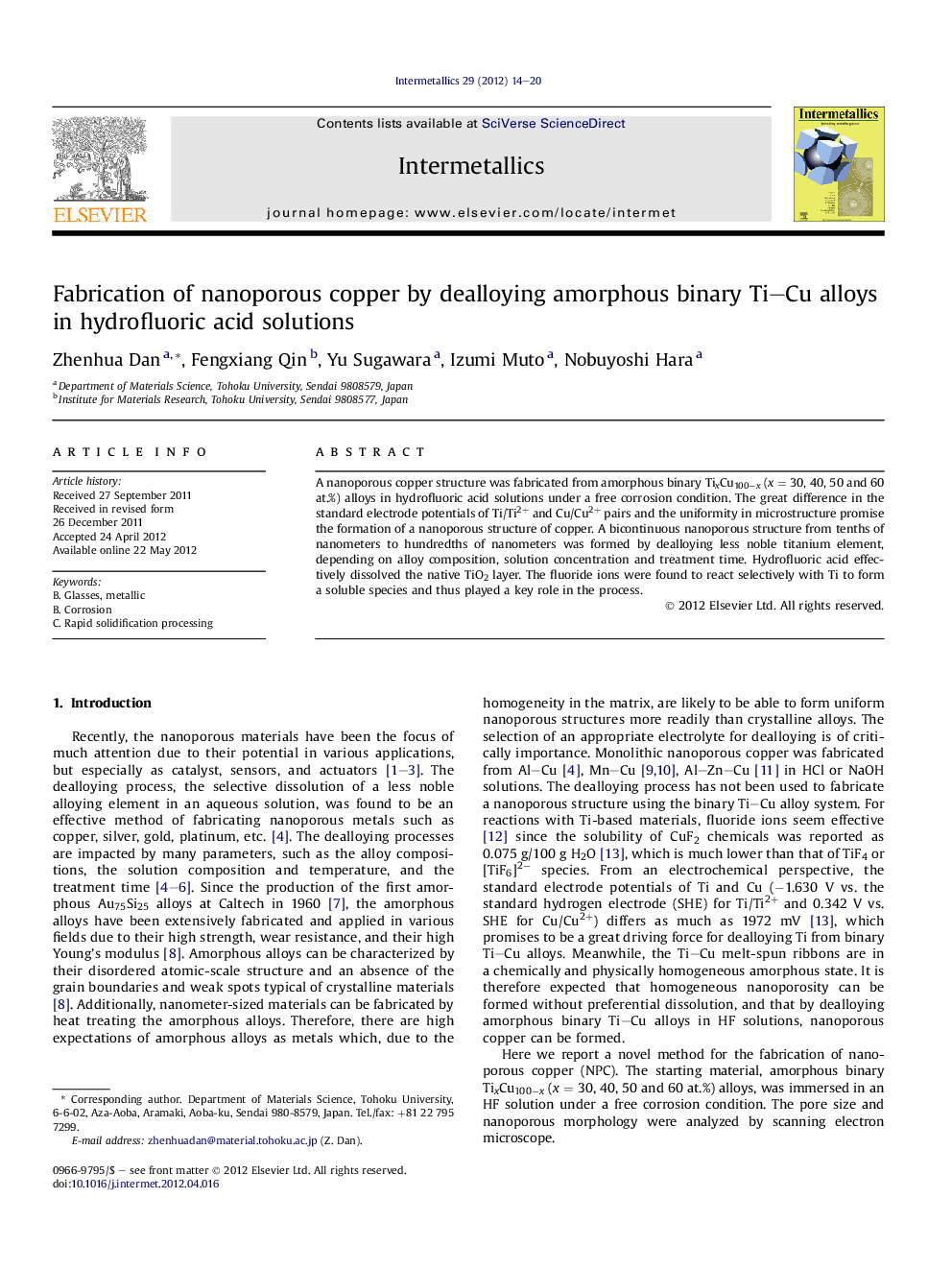| Article ID | Journal | Published Year | Pages | File Type |
|---|---|---|---|---|
| 1600425 | Intermetallics | 2012 | 7 Pages |
A nanoporous copper structure was fabricated from amorphous binary TixCu100−x (x = 30, 40, 50 and 60 at.%) alloys in hydrofluoric acid solutions under a free corrosion condition. The great difference in the standard electrode potentials of Ti/Ti2+ and Cu/Cu2+ pairs and the uniformity in microstructure promise the formation of a nanoporous structure of copper. A bicontinuous nanoporous structure from tenths of nanometers to hundredths of nanometers was formed by dealloying less noble titanium element, depending on alloy composition, solution concentration and treatment time. Hydrofluoric acid effectively dissolved the native TiO2 layer. The fluoride ions were found to react selectively with Ti to form a soluble species and thus played a key role in the process.
► Amorphous binary Ti–Cu alloys as the starting material for dealloying. ► Nanoporous Cu can be formed after immersion Ti–Cu ribbons in HF solutions. ► F− ions are effective for dealloying Ti from Ti–Cu alloys. ► Pores with few tenths of nanometers to hundredths of nanometers were obtained.
